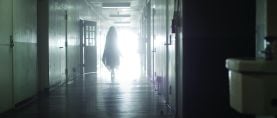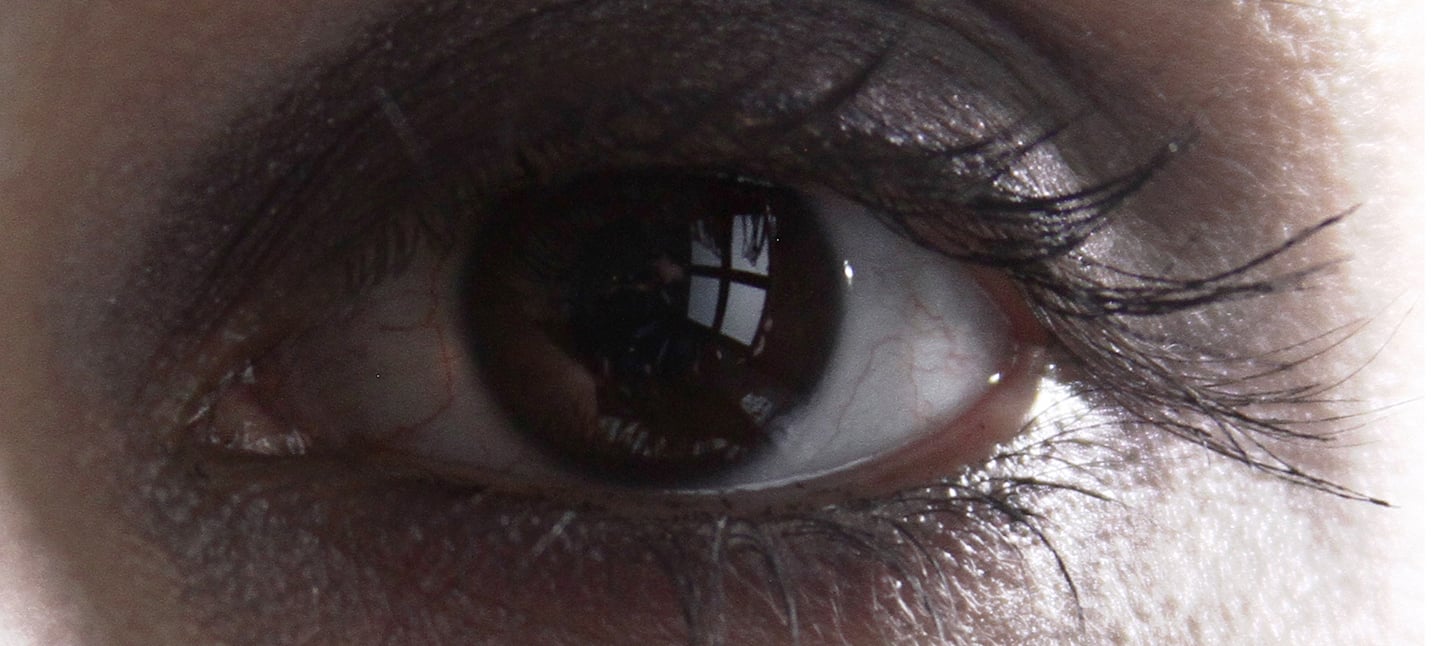
Eye Lights
The eyes are where we most often look when we watch an actor’s performance, and where we find the truth in their portrayal.
“The eyes are the windows to the soul.”
The eyes are also where we most often look when we watch an actor’s performance, and where we find the truth in their portrayal. Having the right kind of look to the actors’ eyes is therefore extremely important — and central to crafting that “right look” is an eye light, sometimes referred to as a “catch light” because its reflection will be caught in the curvature of the eye.
A quick aside: An eye light should not be confused with a “slash” of light across an actor’s eyes, a dated technique that once upon a time was a popular means of accentuating a character’s heightened emotions. This was wonderfully parodied by Owen Roizman, ASC in Barry Sonnenfeld’s 1991 feature The Addams Family. At several moments in the film, Anjelica Huston, portraying Morticia Addams, steps into a perfectly shaped and obvious slash of light that lands right across her eyes.
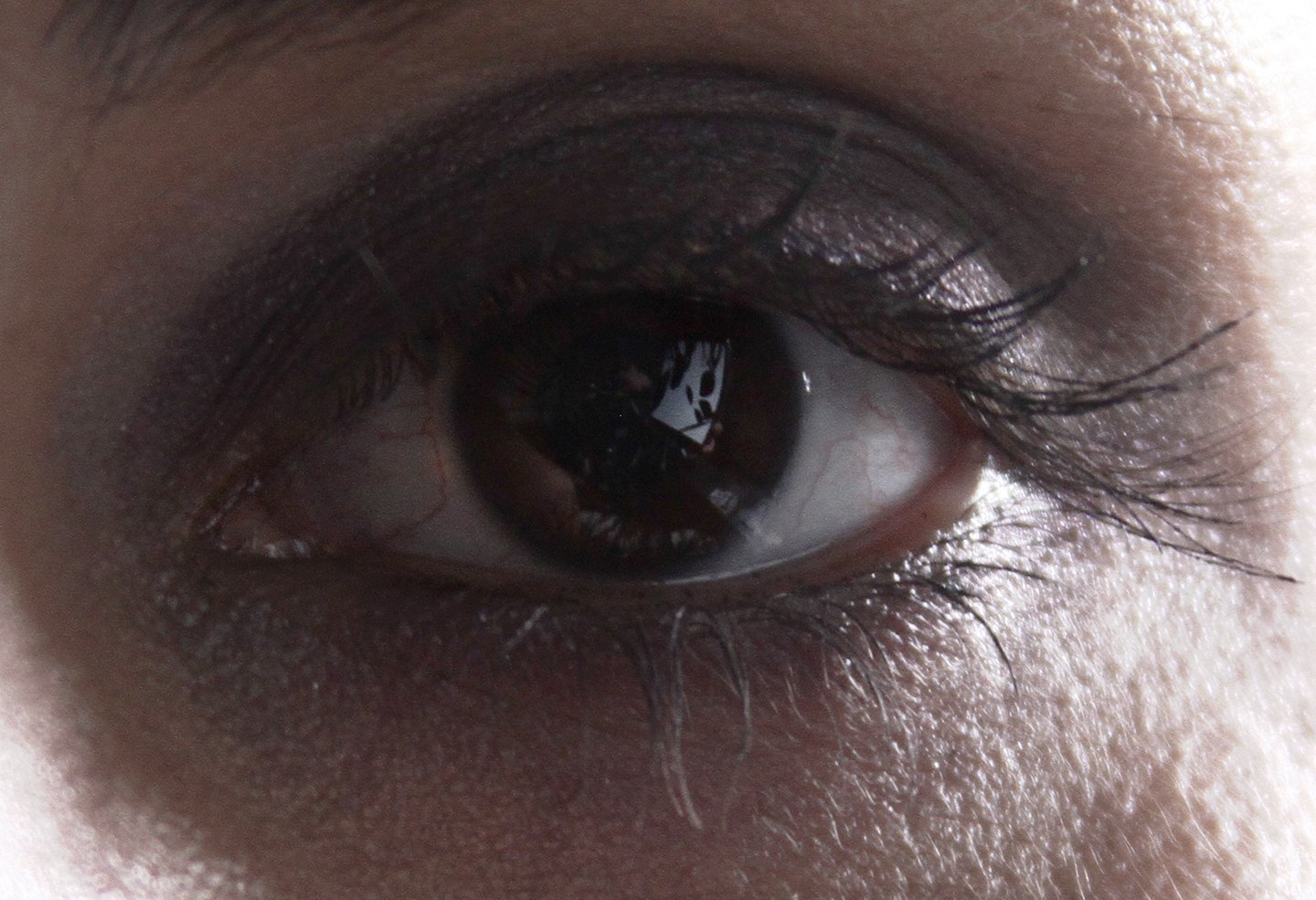
The eye light we’re talking about is the specular, mirrorlike reflection of light in the eye. A character without this light could be said to appear dull, lifeless, intimidating, scary — or even dead. A sparkle or glimmer in the eyes, however gives a character a touch of added life and helps draw the audience into the performance.
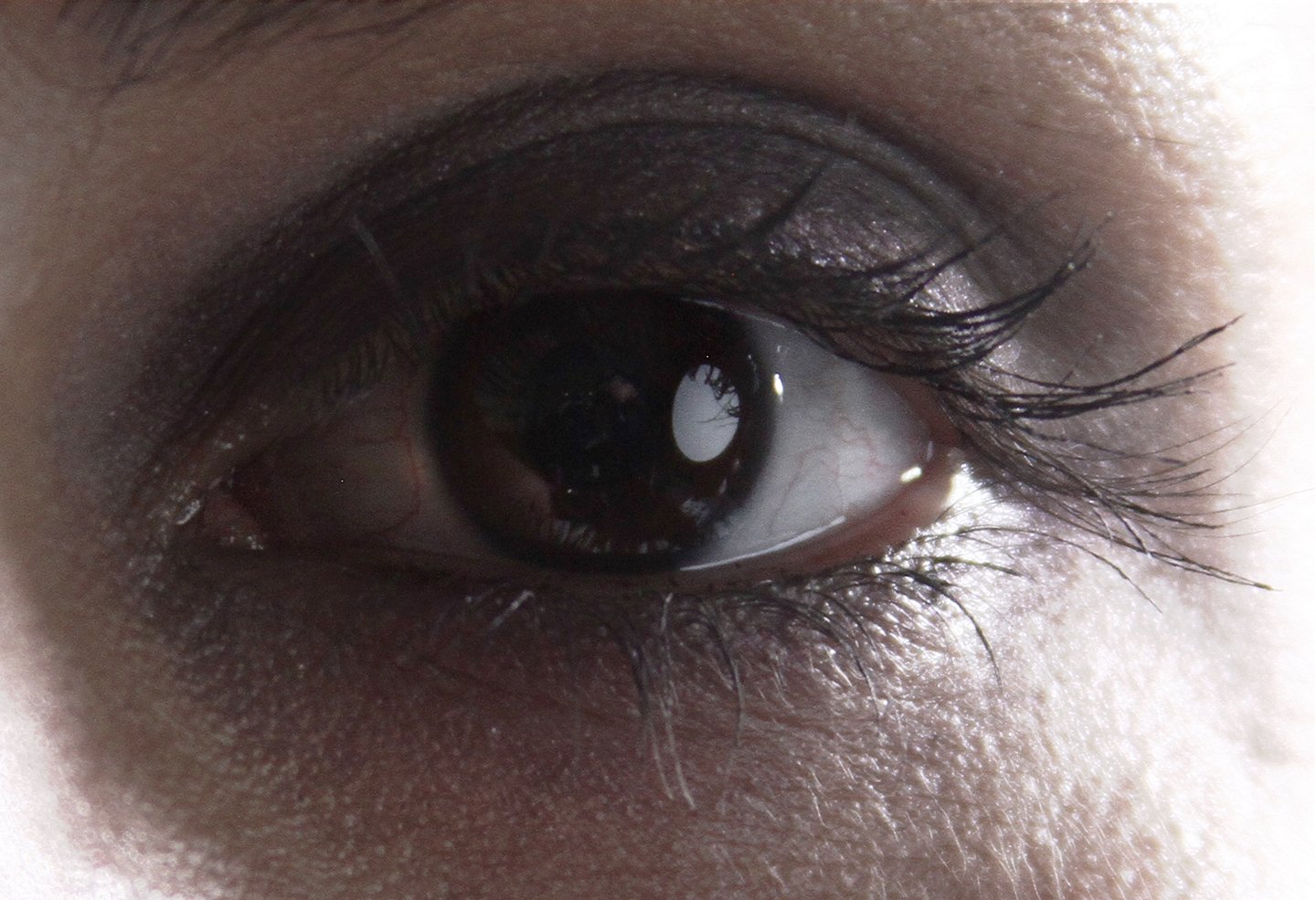
Achieving the right eye light can be an art form unto itself. Many cinematographers simply place a low-wattage lamp on the camera, just over the lens; this is the perfect axis for the camera to see the reflection in the eye. This could be a 150-watt Fresnel, or a 6" fluorescent tube, or even a small LED that’s been diffused and dimmed-down. The purpose is rarely to add light into the face, but rather to catch a reflection of the light in the eye of the performer.
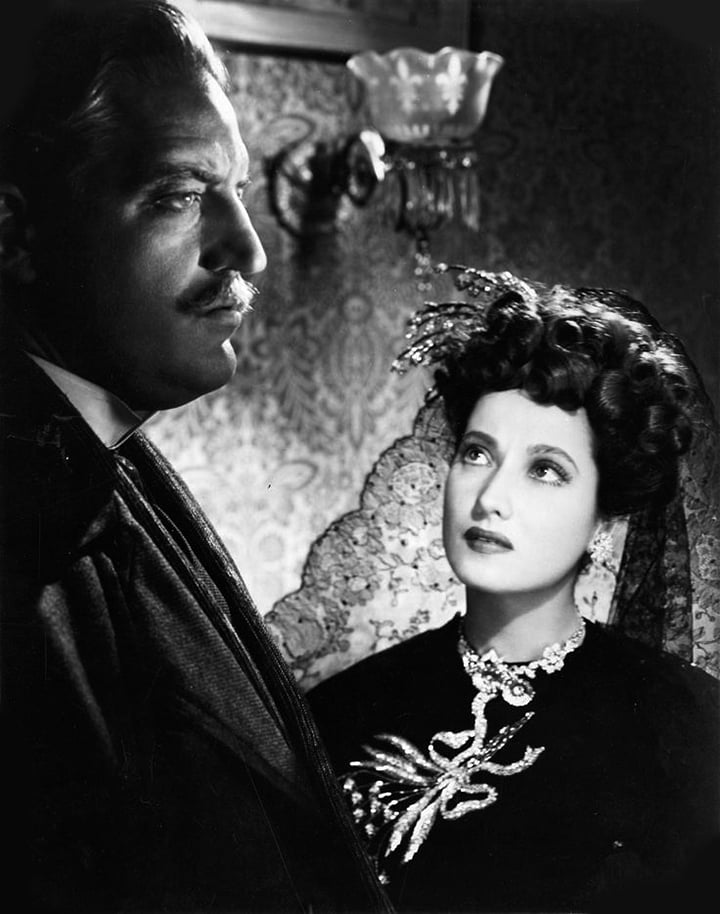
As cinema legend has it, the eye light dates back to the 1944 film The Lodger, shot by Lucien Ballard, ASC and starring his soon-to-be wife, Merle Oberon. Oberon had been in a car accident that left small scars on her face; Ballard hid these scars by slightly washing them out with a small lamp — dubbed an “Obie” after Oberon — positioned right over the camera. A wonderful side effect of having a source so close to the axis of the lens was that it created a highlight in Oberon’s eyes. Many cinematographers still refer to any on-camera light as an Obie.
The kind of light you use, its shape and size, affects the reflection in the eye. In the 1990s, a trend in music-video cinematography was to create eye lights by using lights arranged in unique shapes around the camera’s lens. A more traditional ring-light was famously used on Madonna’s “Vogue” video (1990), directed by David Fincher and photographed by Pascal Lebègue, AFC.
Back in my days as a gaffer, I lit several music videos for director-cinematographer Joseph Kahn using a 4' x 4' square of beadboard (polystyrene foam) and cutting a hole in the center of it for the lens to see through. We would then strap four to six 4' fluorescent tubes above the hole and four to six below and create a soft and effective front light that resulted in interesting linear eye lights in the subject. For the Brandy and Monica video “The Boy Is Mine,” this ring-light variation was our sole source for the majority of the shoot.
Achieving the right eye light for a given project can be much more difficult than just placing a light around or near the lens, however. Discussing the feature I Origins — which follows a young scientist, Ian (Michael Pitt), and his obsessive research into iris patterns — cinematographer Markus Förderer, BVK told AC (Sept. 2014), “I became obsessed with eye lights.
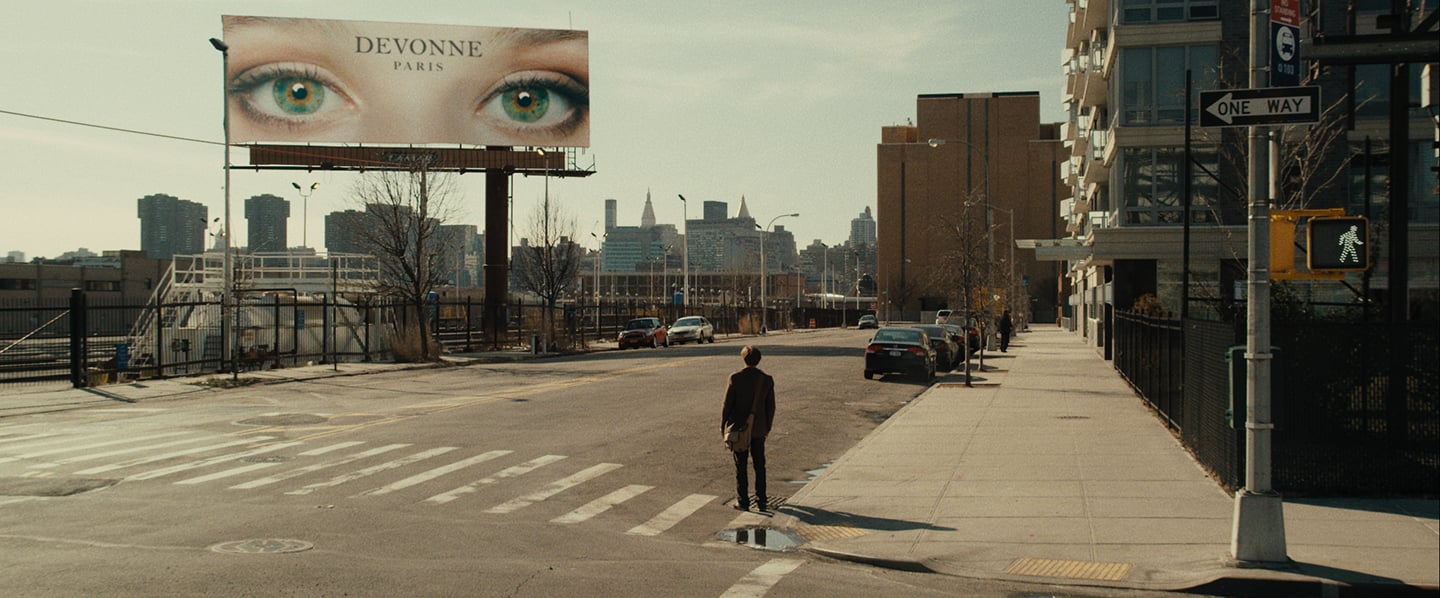
“I shot a lot of tests,” he continued. “I had my iPad with various shapes of light — dots or organic shapes — which we could place close to the actor’s face to get a reflection in the eye of something other than just a pinpoint of light or the square shape of a bounce board.
“It’s amazing how different an eye can look depending on the shape of the eye light,” Förderer added. “If you have a really big reflection in the eye, you can’t really [discern] the texture and pattern in the iris, and if you have no reflection, the eye looks dead. I found that the best solution was to have an amorphous shape that was a little more rounded, with soft edges, but not symmetrical. If we reshaped a bounce board into a rounder shape by taping the edges with black tape, then you saw the life in the eye but your brain would kind of erase the highlight.”
Förderer also strove to find the best angle at which to place the eye light, ultimately deciding to set it as far off-axis as possible without losing the highlight. “You want the light far enough away so it doesn’t fill in the actor’s face, but still close enough to the lens axis that you get the reflection,” he explained. “I felt it always looked better off to the side — not centered — and slightly above the eye line.”
In some instances, he added, it was also important not to use an eye light. “When we wanted someone’s eyes to look special, we added the eye light with the off-axis, organic-shaped source. Otherwise, I was careful not to include eye lights.” As an example, the cinematographer pointed to a diner scene between the characters Ian and Sofi (Astrid Bergès-Frisbey). There, Förderer used “a single source for her, an M18 outside the window through a diffusion frame that we rounded — but not into a perfect circle — by taping off the corners. It was both her key light and her eye light, and it created a beautiful highlight. That same light was also a great backlight for Michael, and I made sure he didn’t have any eye light at all, which made her look much more special and ‘alive’ than him. When we moved into Sofi’s close-ups, I created her eye light using a small silver reflector with the same kind of organic shape taped on it.”
The movie’s attention to iris patterns necessitated a number of macro shots of actors’ eyes, which the filmmakers captured with a Canon EF 100mm macro lens. During preproduction, Förderer explained, “We did some early tests in [director Mike Cahill’s] New York apartment, shooting our own eyes to determine how we wanted to light the macro shots — since the eye is like a mirror, you see all the reflections of the light sources and the camera itself. We took a black trash bin, mounted LED lights and cut a small hole in it; then we put the bin over our heads and shot through the hole. It worked great to eliminate the reflections, so we created a larger version [for production]: a 20' x 20' black box with one strong M18 HMI very far away so that the reflection could be controlled.”
You'll find more Shot Craft content on AC’s Instagram.
